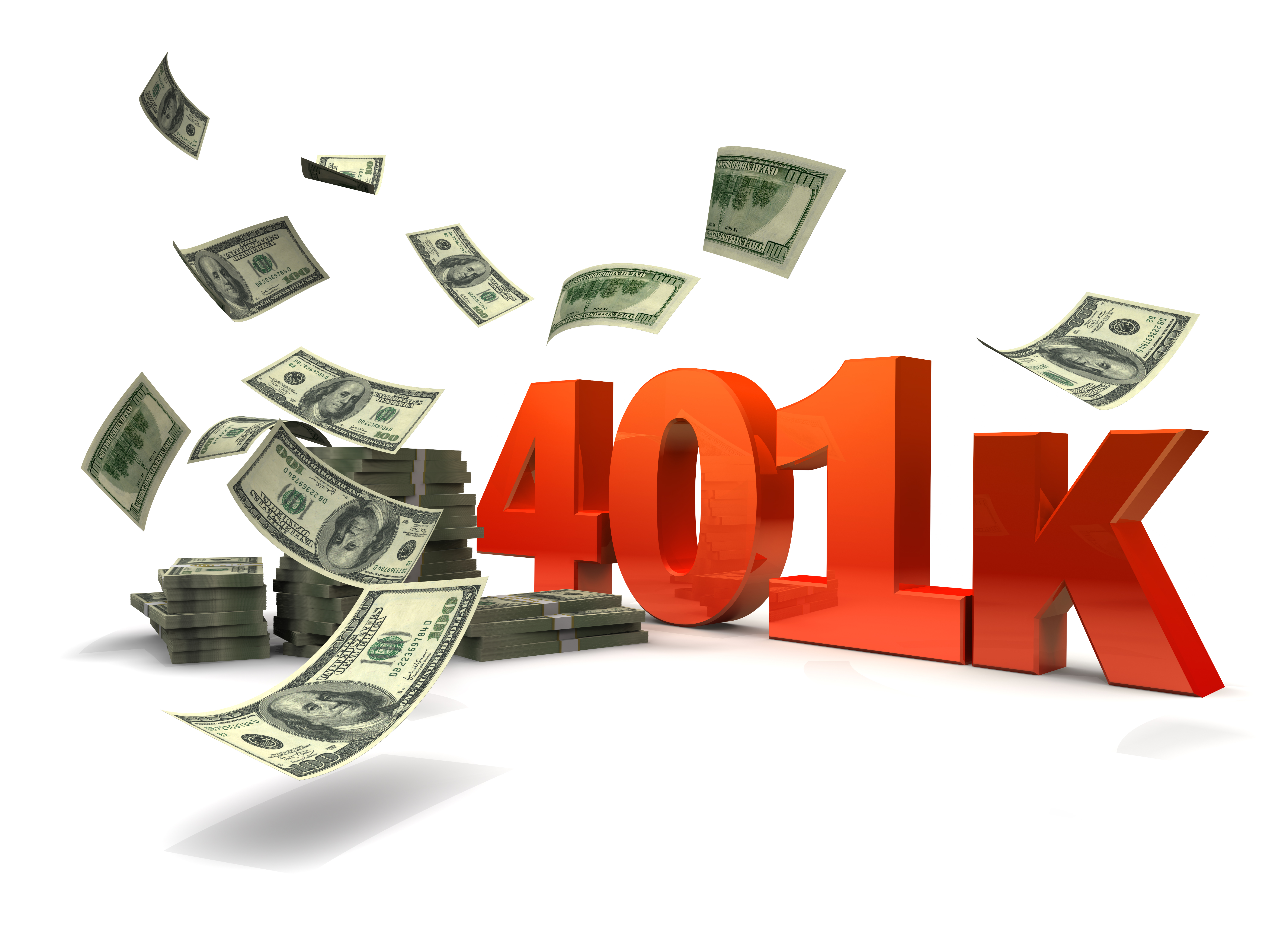401(k) Plans: 10 Things You Should Know
When it comes to 401(k) plans, it's your money. But your boss and the government make the rules.


Since Congress created 401(k) plans in 1978, they have become the most popular retirement account in the U.S. One-third of workers had a 401(k)-style account in 2020, roughly double the number with an individual retirement account and triple those with a pension. While 401(k)s started as a way to build wealth for retirement, they are increasingly being used by retirees to manage their life savings.
“More and more retirees are interested in staying connected with former employers whom they trust,” says Tom Armstrong, vice president of customer analytics and insight at Voya Financial in Walpole, Mass. Armstrong says that thanks to large-group pricing, keeping your money in the old 401(k) could help you qualify for lower investment fees than if you invested on your own by transferring the balance to an IRA.
With that being said, every 401(k) operates differently. And some plans do have serious drawbacks to plan around in retirement, especially since a 401(k) is owned and controlled by your employer or former employer. It may be your money, but employers make the big decisions, even the ones you might not like.

Sign up for Kiplinger’s Free E-Newsletters
Profit and prosper with the best of expert advice on investing, taxes, retirement, personal finance and more - straight to your e-mail.
Profit and prosper with the best of expert advice - straight to your e-mail.
1. There are rules for 401(k) plans
The federal government sets requirements for retirement plans like 401(k)s. However, employers can also set their own rules. “401(k) plan rules can’t be less restrictive than the IRS rules but they can be more restrictive,” says Brandon Reese, president of TBS Retirement Planning in Hurst, Texas.
For example, a 401(k) plan might restrict you to taking money out only once a month or once a quarter as a retiree, versus any time you want with an IRA. The employer also decides whether you can take money out while working, along with other features and investments in the plan. To see how your 401(k) operates, check your plan’s summary plan description.
2. Early retirees can start withdrawals at age 55
For IRAs, you must be at least 59½ to make retirement withdrawals or else you’d owe a 10% early withdrawal penalty. Due to an odd quirk in the law, you can start taking penalty-free withdrawals from a 401(k) at age 55 if you are retired, but you’ll have to stop if you take on a new job. As Armstrong explains, “this rule only applies to the job you just left. If you have 401(k)s from older jobs, you can’t tap those until you turn 59½.” And if you start another job with a 401(k) after retiring, you will no longer be able to make penalty-free 401(k) retirement withdrawals until you turn 59½ or leave that new job, whichever comes first.
3. Taxes depend on the type of 401(k)
When you withdraw money from a traditional 401(k), you owe income tax on the entire amount. With a Roth 401(k), your withdrawal is completely tax-free. The tax rules are the same whether you’re working or retired.
Some plans allow you to convert a traditional 401(k) into a Roth 401(k). You’d owe income tax on the entire amount you convert, but from that point on your gains and withdrawals would be tax-free. If your plan doesn’t allow you to switch to a Roth 401(k), you can receive the same tax benefits by converting the traditional 401(k) into a Roth IRA, though you must have stopped working to move your 401(k) into an IRA.
4. Your employer sets the investment options
While employers prioritize investments that help workers save, Voya’s Armstrong finds that plans are offering better options for retirees. “We’re seeing more 401(k)s with lifetime income solutions, which let you annuitize part of your plan to generate a paycheck for life,” he says.
Major 401(k) providers like Fidelity and Charles Schwab also offer something called a "brokerage window", potentially available for both workers and retirees. This lets you set up and manage your 401(k) like your own brokerage account, allowing you to pick investments beyond what’s on the employer list. Not all employers provide this option though. If you’re unhappy with the plan investment options, you could ask your former employer’s HR department to consider offering better ones.
A 401(k) is not your plan, it’s an employer’s wallet with your money in it.
Brandon Reese, TBS
5. Moving to an IRA has become a lot easier
An IRA rollover moves your 401(k) balance into your own IRA. You must have left the job offering the 401(k) to make a rollover. An IRA would give you much more flexibility over the investments, plus you don’t have to deal with any other employer restrictions, like withdrawal limits. A rollover could also make sense if you find the investment fees in your 401(k) are high compared with investing on your own.
“Back in the day, moving accounts wasn’t a friendly experience, requiring a lot of paperwork and signatures,” says Armstrong, noting that many 401(k) plans now let you set up a transfer through your online account.
Rolling over a traditional 401(k) into a traditional IRA will not lead to any taxes, nor are there any taxes when you move a Roth 401(k) into a Roth IRA. But if you roll over a traditional 401(k) into a Roth IRA, you’d owe taxes on the entire amount upfront in exchange for future withdrawals being tax-free.
6. You can consolidate multiple 401(k) plans
A 401(k) could allow you to roll over other retirement plans into it both when you’re still working and after you’ve retired. This can make sense if you’ve got 401(k)s from multiple former jobs. “It’s not unusual for someone to have accumulated two to three retirement plans over their career. Consolidating into one account makes them easier to track,” says Armstrong.
7. Some plans allow loans in retirement
Another 401(k) benefit is that, unlike with an IRA, most plans let you borrow up to 50% of your vested account balance — to a maximum of $50,000. Some employers allow you to continue taking loans even after you’ve retired. Reese, the retirement planner from Texas, finds this option helpful as retirees deal with major one-time expenses, such as moving.
Not all employers allow retiree loans, however. Karen Birr, manager of advice services at Thrivent, a financial services firm headquartered in Minneapolis, says many employers find it too complicated to collect the loan payments since they no longer come out of your paycheck. Indeed, if you have an outstanding loan balance before you retire, “an employer may require you to pay the entire amount back within 60 to 90 days of your retirement,” warns Birr. Otherwise, the money counts as a taxable withdrawal.
8. RMDs apply, but rules are changing
If you’ve retired, you must take required minimum distributions (RMDs) from your 401(k) starting when you turn 73 (the age was 72 before this year) whether you need the money or not. If you’re still working, your current plan could allow you to delay RMDs until after you retire, though they would still apply to any 401(k)s from former jobs. In 2033, the starting age for RMDs will increase to 75. Not withdrawing enough to meet the RMD leads to a steep tax penalty. RMDs apply to pre-tax traditional 401(k)s and, for now, Roth 401(k)s. But starting in 2024, the government will no longer require RMDs from Roth 401(k)s.
9. Incorrect beneficiary listings create headaches
If you haven’t checked the beneficiary listings on your 401(k), you should make sure they’re up to date. “Family dynamics change, and the money could go to the wrong person when you die,” says Birr. Like an ex-spouse. Very important: 401(k) beneficiary instructions override whatever you write in your will.
Problems also arise if you leave the account to someone who dies before you or you have no one listed. “The money then goes into your estate after you die, which has limited ability to delay taxes for your heirs,” says Birr. An estate must distribute and pay taxes on all 401(k) funds within five years. Non-spouse heirs could delay withdrawals and taxes for up to 10 years, whereas your spouse could spread withdrawals from an inherited 401(k) over the rest of his or her life.
10. If your employer goes bankrupt, your funds could be frozen
Access to your 401(k) funds depends on your past employer’s financial fortunes. “If a company goes bankrupt, the plan could be frozen,” warns Reese. “When Enron went under, it took 18 months, on average, for people to get their money back.”
You could also temporarily lose access to your 401(k) savings if your former employer is acquired and the new company takes over the retirement plan. As a hedge, Reese recommends that you keep some retirement funds in an account you control, like an IRA. “A 401(k) is not your plan,” he cautions. “It’s an employer’s wallet with your money in it.”
Note: This item first appeared in Kiplinger’s Retirement Report, our popular monthly periodical that covers key concerns of affluent older Americans who are retired or preparing for retirement. Subscribe for retirement advice that’s right on the money
Related articles
Get Kiplinger Today newsletter — free
Profit and prosper with the best of Kiplinger's advice on investing, taxes, retirement, personal finance and much more. Delivered daily. Enter your email in the box and click Sign Me Up.

David is a financial freelance writer based out of Delaware. He specializes in making investing, insurance and retirement planning understandable. He has been published in Kiplinger, Forbes and U.S. News, and also writes for clients like American Express, LendingTree and Prudential. He is currently Treasurer for the Financial Writers Society.
Before becoming a writer, David was an insurance salesman and registered representative for New York Life. During that time, he passed both the Series 6 and CFP exams. David graduated from McGill University with degrees in Economics and Finance where he was also captain of the varsity tennis team.
-
 What 401(k) Savers Near Retirement Can Do Amid Market Volatility
What 401(k) Savers Near Retirement Can Do Amid Market VolatilityWhether retirement is years away, a year or two out, or in the rearview mirror, here's how to handle uncertainty in your 401(k).
By Donna Fuscaldo Published
-
 The New Space Age Takes Off
The New Space Age Takes OffThe Kiplinger Letter From fast broadband to SOS texting, space has never been more embedded in peoples’ lives. The future is even more exciting for rockets, satellites and emerging space tech.
By John Miley Published